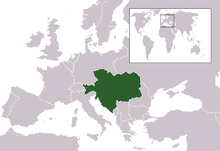Economy of the Habsburg Monarchy

With the abolition of serfdom in the 18th century, the Habsburg Monarchy, with the major industrial, mining areas and forestry of regions Moravia and Bohemia leading the way, began to experience unprecedented economic growth. Beginning in 1841 per capita annual growth in the Habsburg monarchy approached 3.6 percent, a number rivaling that of neighboring Germany. While this growth was rapid and astonishing, it was not sustained.
Within the next decade, a period of stagnation occurred, while other European countries began to experience a continued, steady growth. This slow down can be accredited, for the most part, to a period of ongoing war, beginning in 1848 and ending in 1866 with the Habsburgs defeat by Prussia. This period of war, and a mounting budget deficit, took resources away from private industry, which discouraged industrial growth. This factor eventually brought the economy to a halt in the years after 1855.
The Habsburg's wars in the mid 19th century caused a considerable Economic backwardness through the rest of the 19th century. As other European economies had grown from the 1850s on, the Habsburgs had shrunk, a consequence of the Habsburgs continuing wars and Eastern Europe's continuing neutrality.
References
- "Czech Republic (Archived 2009-10-31)," Microsoft Encarta Online Encyclopedia 2007.
- Economic Growth and Economic Policy in a Multi-National Setting: The Habsburg Monarchy, 1841–1865, Review author[s]: David F. Good. The Journal of Economic History © 1979 Economic History Association
- Economic Growth and Economic Policy in a Multinational Setting: The Habsburg Monarchy, 1841–1865, by Thomas F. Huertas. The Journal of Economic History © 1978 Economic History Association
| ||||||||||||||||||||||